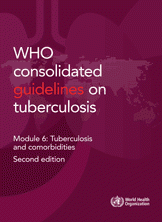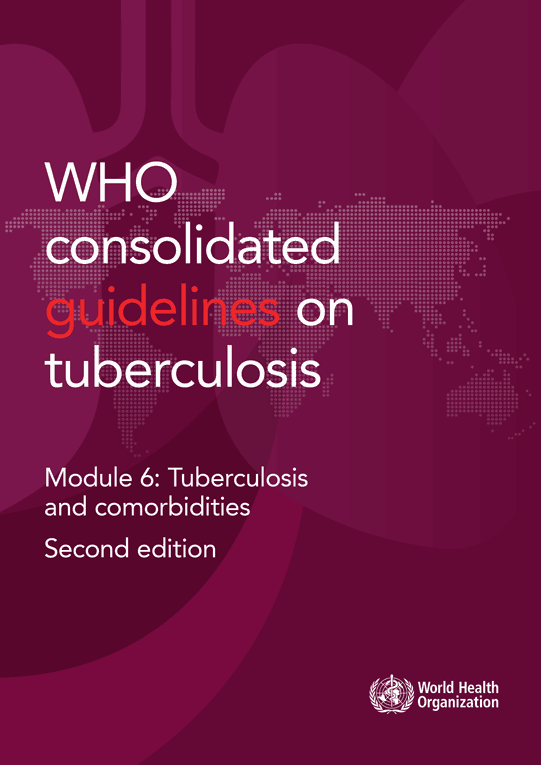Consolidated Guidelines
Introduction
Globally, tuberculosis (TB) remains a significant cause of ill health and is a leading cause of death due to an infectious agent (1). Five main health-related risk factors – diabetes mellitus (diabetes), HIV, smoking, undernutrition and disorders due to alcohol use – account collectively for just under half of all new TB episodes globally. The contribution of these risk factors to the global TB burden is reported annually in the World Health Organization’s (WHO’s) global tuberculosis report (1).
A5.4 A survey to explore the programmatic feasibility of levofloxacin (Lfx) TPT for MDR-TB contacts11
Introduction
The survey assessed the feasibility of programmatic use of Lfx for TPT among contacts of MDR-TB patients in the eventuality of a WHO recommendation for its programmatic use. The objective was to collect perspectives from national TB programmes (NTPs), explore current practices for MDR TPT, its programmatic feasibility, affordability, impact on equity, acceptability to patients and health-care workers and to inform the discussion of WHO Guideline group at its meeting on 4–6December 2023.
Methods
A5.3 Assessing fluoroquinolone (levofloxacin) acceptability among contacts of MDR-TB patients: a qualitative study10
Objective: to assess the values, preferences, acceptability and feasibility of Lfx as TPT for adult HHCs of patients diagnosed with MDR-TB in five low- and middle-income countries: Georgia, India, Indonesia, South Africa and Viet Nam.
A5.2 Use of fluoroquinolones for TB preventive treatment in contacts of persons with MDR-/RR-TB: A systematic review
Harsimren Sidhu, Siobhan Carroll, Dick Menzies⁹
Introduction
A5.1 Summary of TB CHAMP and V-QUIN clinical trials
Tuberculosis Child Multidrug-Resistant Preventive Therapy Trial (TB CHAMP): Efficacy and safety of levofloxacin preventive treatment in child and adolescent HHCs of multidrug-resistant tuberculosis (MDR-TB). Author: Anneke Hesseling⁷
V-QUIN MDR-TB prevention study: Levofloxacin versus placebo for the treatment of tuberculosis infection among contacts of patients with MDR-TB. Author: Greg Fox⁸
Methods
Pagination
- Previous page
- Page 10
- Next page

 Feedback
Feedback
